About Me
My name is Marc Brooker. I've been writing code, reading code, and living vicariously through computers for as long as I can remember. I like to build things that work. I also dabble in machining, welding, cooking and skiing.I'm currently an engineer at Amazon Web Services (AWS) in Seattle, where I work on databases, serverless, and serverless databases. Before that, I worked on EC2 and EBS.
All opinions are my own. This is my less-technical blog on non-work topics. For my main blog, visit https://brooker.co.za/blog/.
Links
My Publications and Videos@marcbrooker on Mastodon @MarcJBrooker on Twitter
Fixing the KitchenAid’s Major Flaw
It’s somewhat surprising that a product as loved and ubiquitous as the KitchenAid tilt-head ships with at least two major design flaws.
- The tilt adjustment screw doesn’t have any locking mechanism, and so the tilt setting drifts down over time. Everdime is a neat little product that fixes this.
- The tilt head shaft (the one that the upper casting tilts on) isn’t retained properly, and so works loose over time.
Today, we’re going to fix that problem. Here’s what I mean:
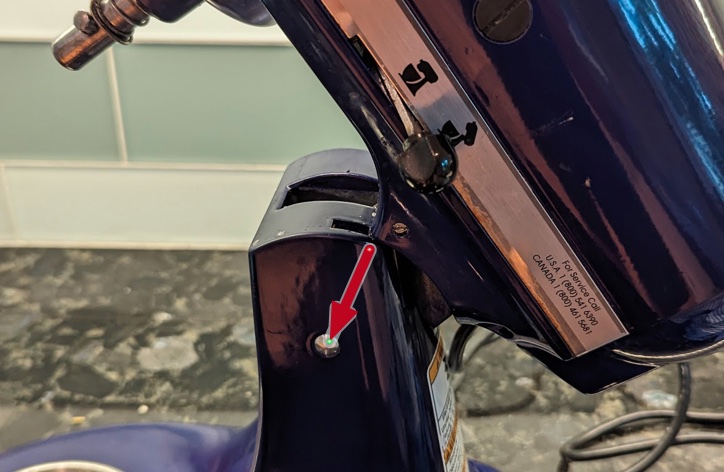
That little chrome shaft is the only thing holding the head and foot together. As the head vibrates (especially when kneading with the dough hook), that shaft moves to one side. Left long enough, the head falls off entirely. The problem isn’t a manufacturing problem, but a rather fundamental design flaw. We can see what’s happening by looking underneath.
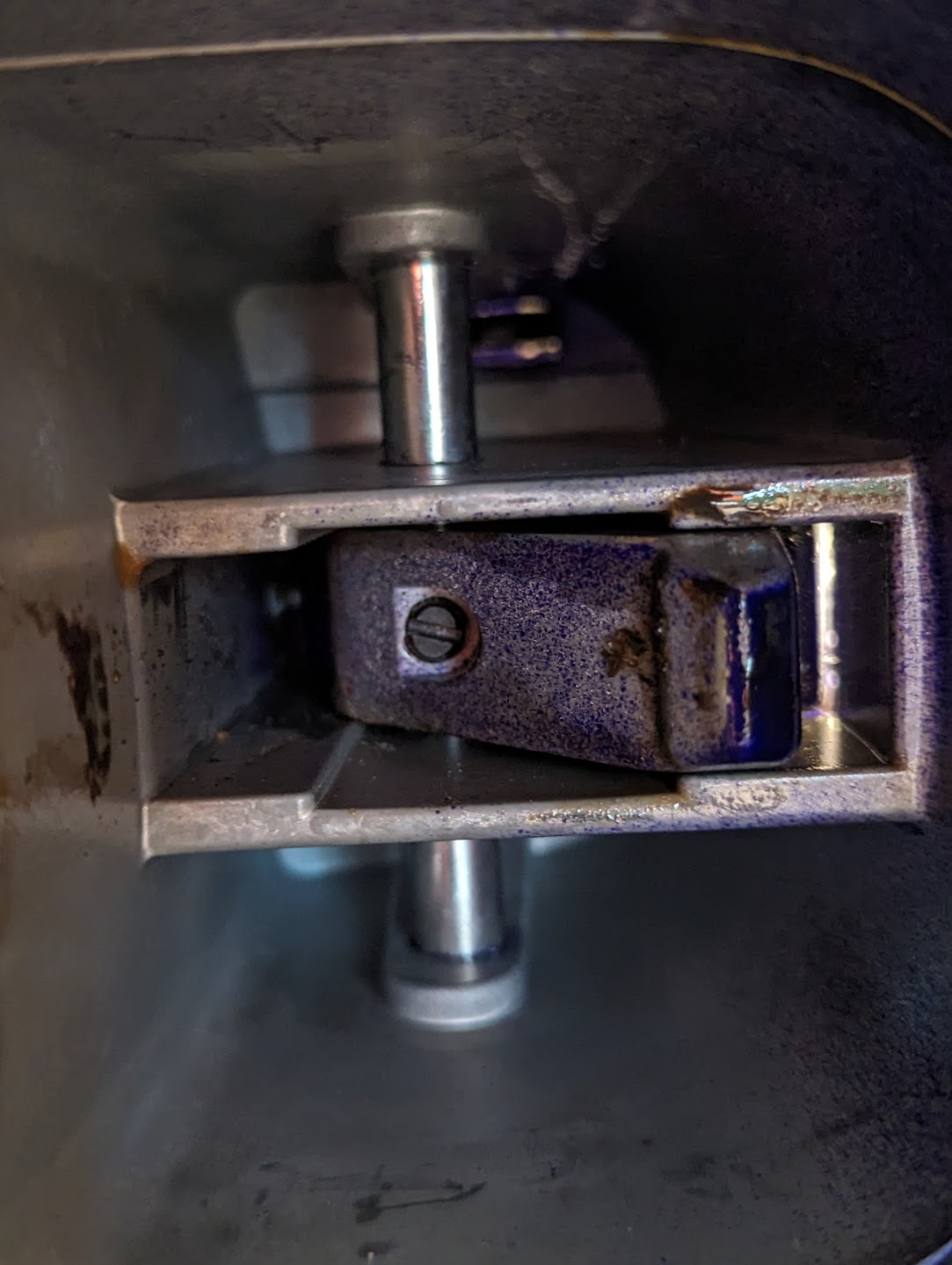
Here we can see the shaft is retained with a small screw. That’s not a problem in itself. The problem is that the retaining screw goes right into the casting (which, I think, is aluminium), limiting torque. It also pushes straight into the chromed, hardened, shaft. Without tons of torque on the screw, it can’t get enough bite to keep the shaft in place. This can be solved with a small flat spot on the shaft, or a small hole in the shaft, so the screw doesn’t need to hold just by trying to dent the hard chrome surface.
We’ve got a couple options to fix it: file a small flat, drill a small hole, or mill a small flat with a CNC mill. The first two are sensible. The third absolutely overkill. To the mill!
Side Quest: Making a Jack Screw
Somewhere, some how, my machinists’ jacks have gone missing. First, let’s talk about why that’s a problem:
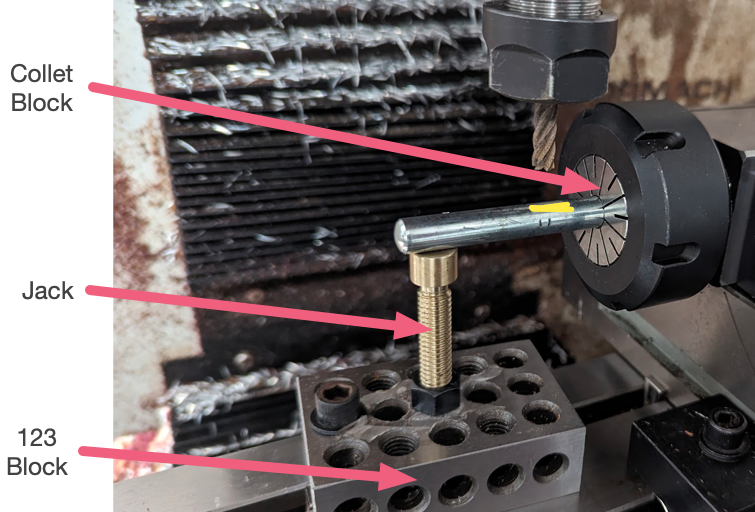
We’re going to hold the shaft in a collet in a collet block while we mill it. The collet will stop the shaft from turning or slipping. Unfortunately it only holds one end, so as the mill pushes down to cut, the shaft will bend, vibrate, or rattle. Best-case that sounds bad. Worst case it breaks the cutting tool, made from brittle carbide. One solution is to hold up the far side of the piece with a jack.
Easy! I have a bunch of 123 blocks, and I can bolt one down to the machine and use a 3/8-16 screw as a jack. Unfortunately, I’m all out of 3/8-16 screws in my (mostly metric) shop, so we’re stuck making one.
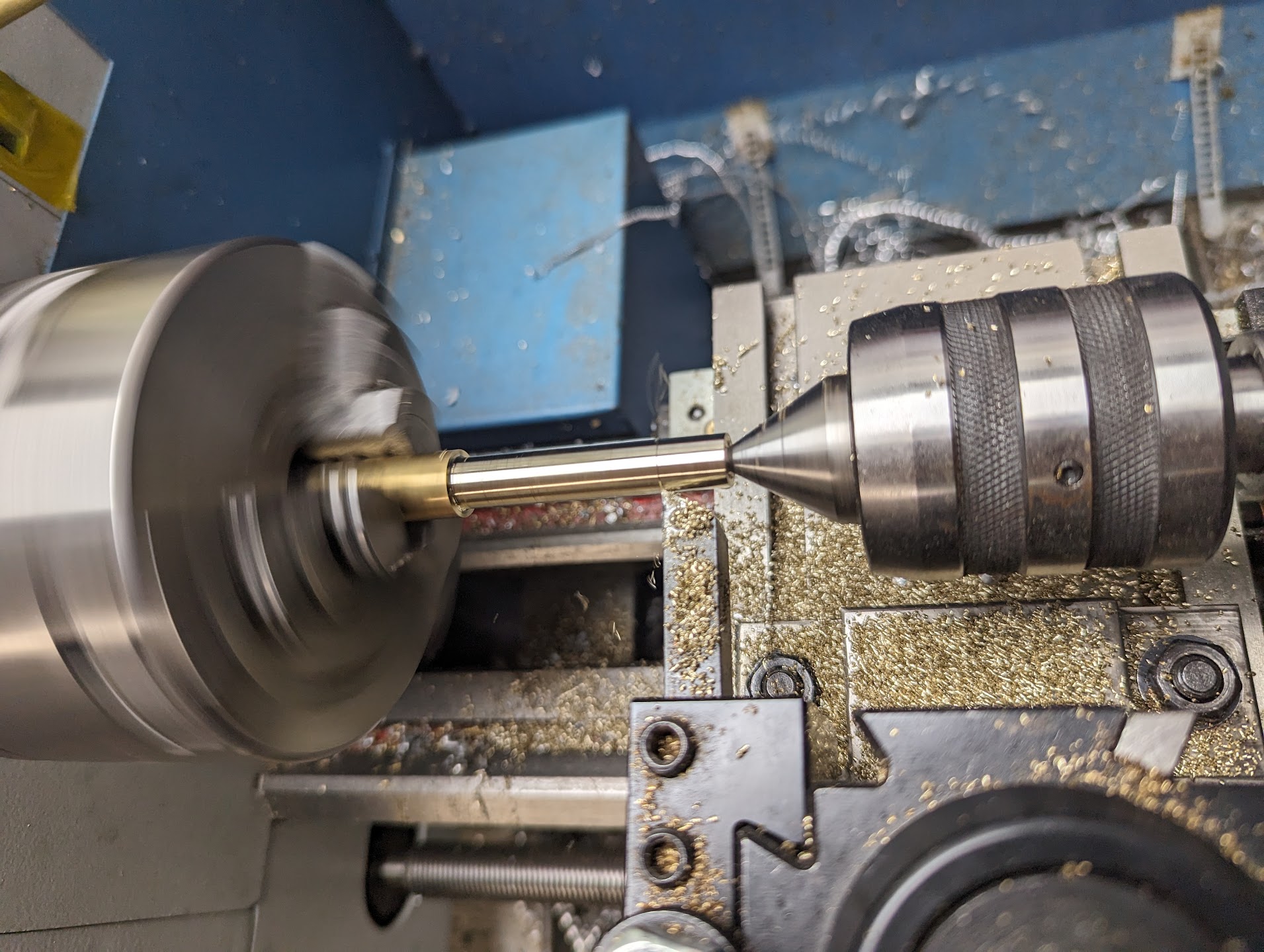
First we turn a piece of brass to size in the lathe, then thread the brass to 16 tpi. As is traditional, I screwed up my first attempt at threading. But the part was mostly recoverable, so I ended up with a decent-enough brass jack screw.
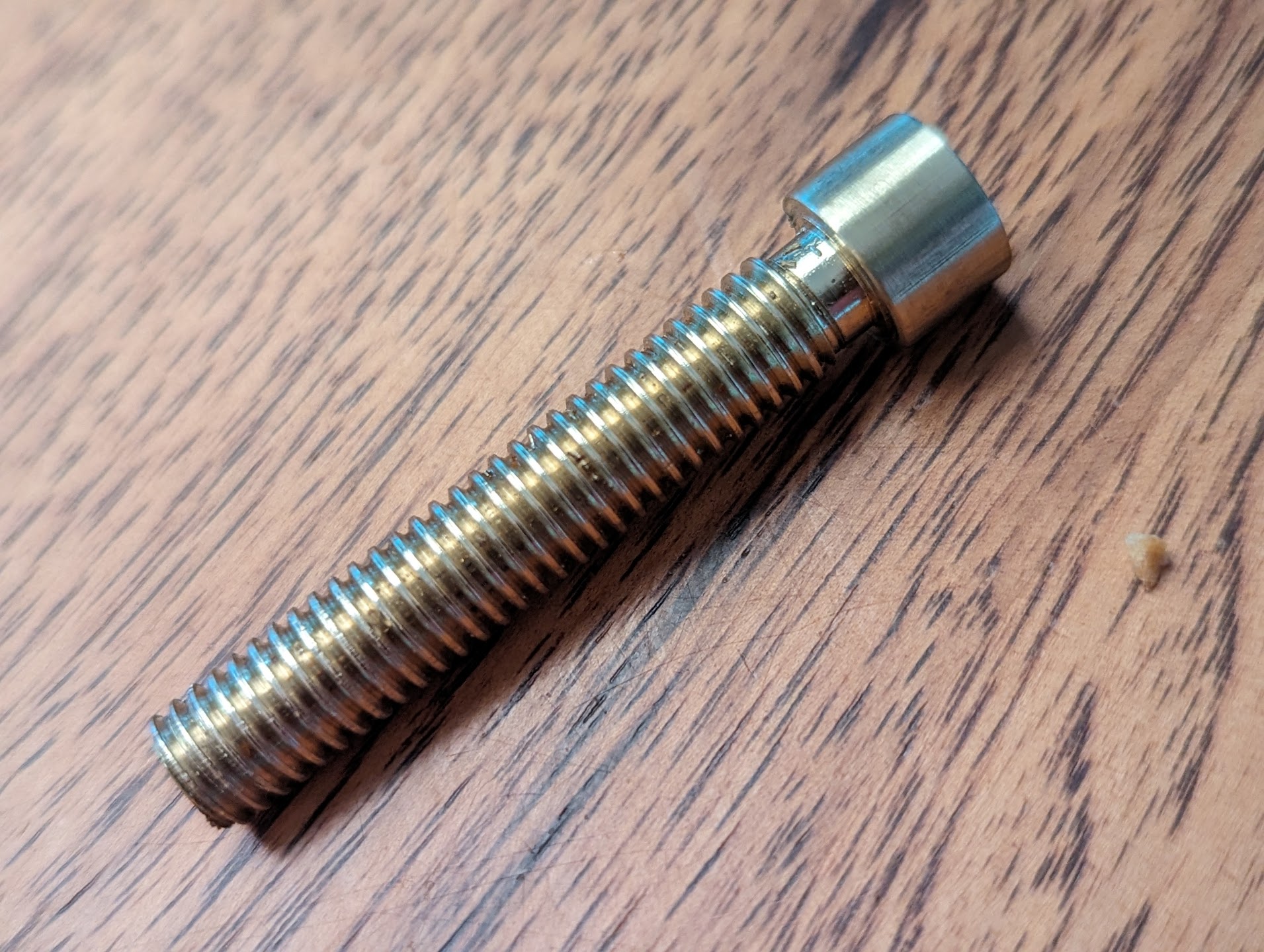
Back to the main project
Which brings us back to the main project: milling that flat. With the jack screw in hand, we can set things up in the mill and get milling. On a CNC machine like this, the milling step is mostly telling the machine what shape we want to mill out, and choosing how fast to cut. Rigidity is the name of the game in machining, and I don’t have a lot here, so we’ll cut slowly in several passes.

Finally, a shaft with a nice flat spot.
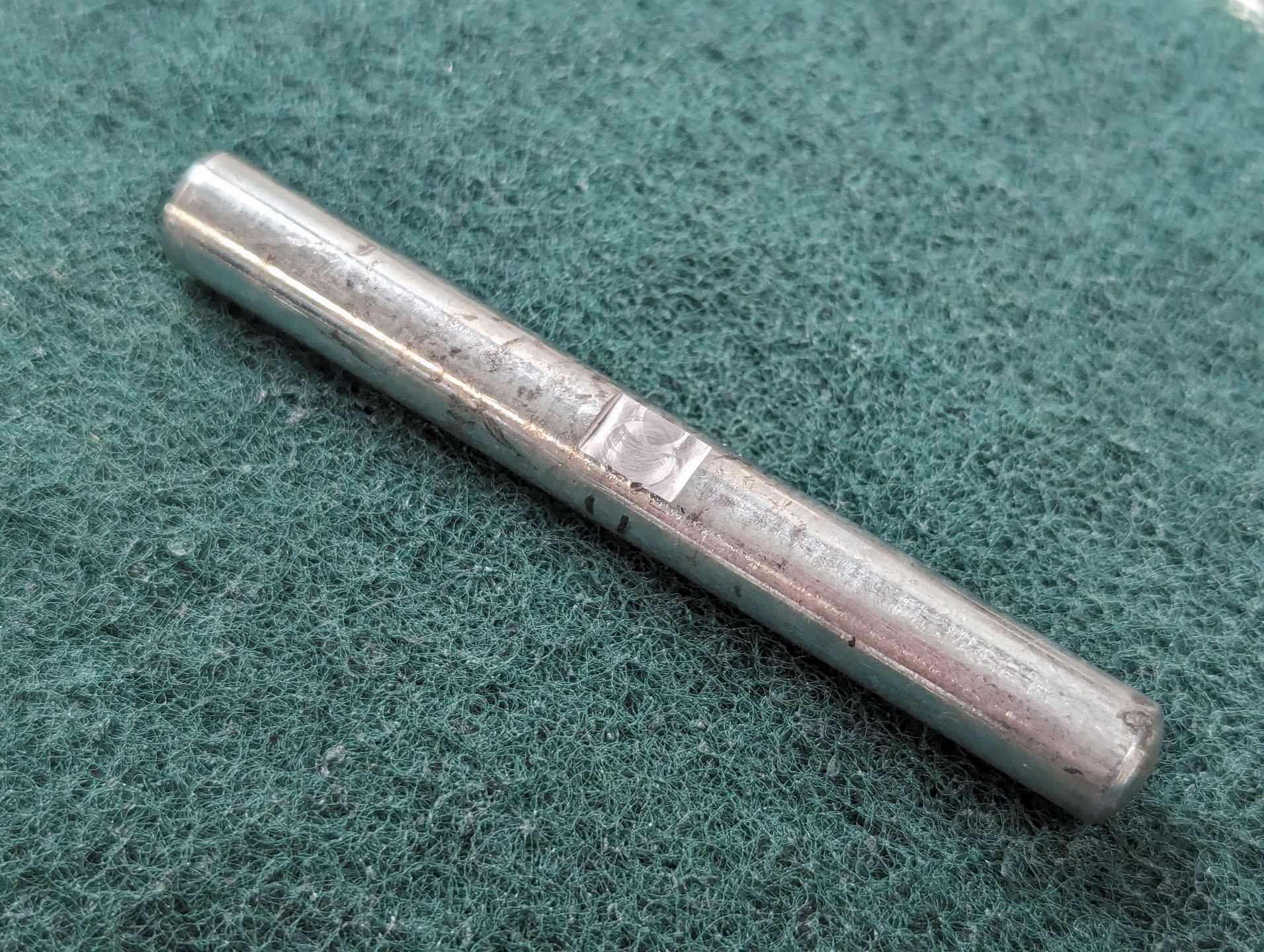
After a nice clean with some acetone then some dishwashing liquid to get the machine lubricant off, it can be reinstalled in the KitchenAid. A dab of food-safe grease on the moving surfaces also seemed like a good idea. Then the retaining screw can be tightened down onto the flat, and stuck in place with loctite. Problem solved!
Since doing this, the KitchenAid has been way more stable and reliable. I don’t have any idea why they don’t do something similar at the factory, because it’s a tiny cost that makes the whole machine way more stable.
Other folks online have written about gluing the shaft into one of the castings (e.g. with Loctite 620) which would likely work, but would make the machine much harder to disassemble later.
